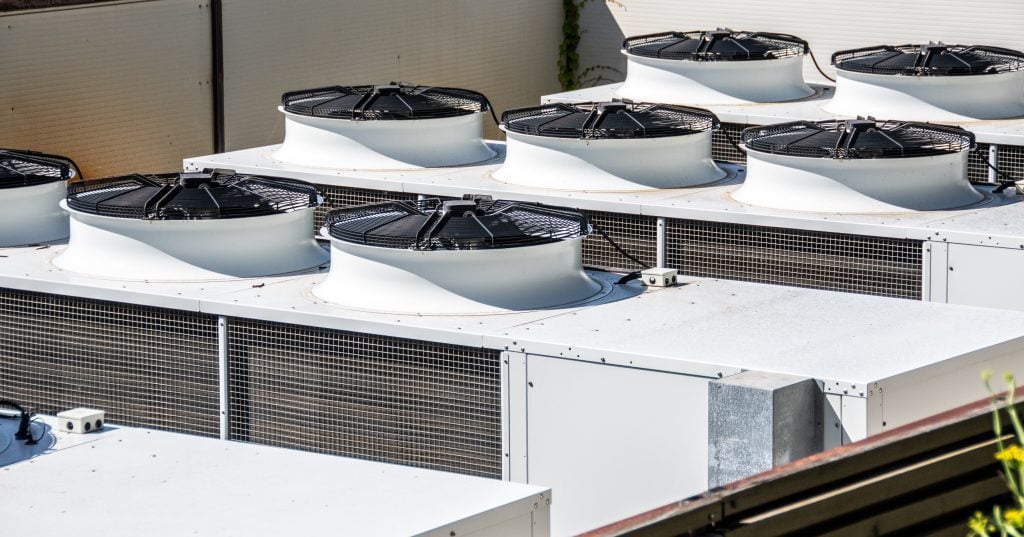CSSI Vice President Brian Broussard has some sage advice for commercial property owners looking for ways to boost their investments and keep their operational costs in check:
“Look into the Section 179D tax deduction. It’s a handy but sometimes overlooked tool that can help you save big on energy-efficient upgrades for your buildings.”
Let’s dive into how this deduction works and how it can benefit you.
How Section 179D Deductions Can Offset the Cost of Energy-Efficient Building Upgrades

Introduced as part of the Energy Policy Act of 2005, the Section 179D tax deduction was designed to encourage property owners to make energy-efficient improvements in their commercial buildings.
“For owners looking to make significant upgrades, such as installing energy-efficient HVAC systems, lighting, or building envelope improvements, the 179D tax deduction can provide substantial financial relief,” says Broussard.
The deduction amount is calculated based on the energy savings achieved through each of the upgrades.
For the tax years 2025 and beyond, the deduction can be up to $5.81 per square foot of the building space that meets the required energy efficiency standards.
So, for example, if you own a 50,000 square-foot commercial property and you qualify for the maximum deduction, you could potentially save up to $250,000 on your tax bill.
How to Qualify for 179D Tax Deduction

To take advantage of the 179D tax deduction, your building improvements must meet specific energy efficiency standards. Here’s a breakdown of what you need to know:
Requirements
The energy-efficient improvements must achieve a reduction in energy and power costs.
Specifically, the improvements should reduce energy and power costs by at least 50% compared to a building that meets the ASHRAE Standard 90.1-2007, which serves as the benchmark.
Qualified Improvements
The deduction covers three main types of improvements:
- Lighting Systems
- HVAC/Hot Systems
- Building Envelope, including insulation, windows, and doors that contribute to energy savings.
Certification
To qualify for the 179D tax deduction, you need to obtain certification from a qualified third-party engineer or contractor. This certification verifies that your building improvements meet the necessary energy efficiency criteria.
Timing
The deduction is claimed in the tax year when qualifying improvements are placed in service. You can also claim the deduction for eligible improvements from prior tax years through an amended return.
How 179D Tax Deductions Can Improve ROI on Energy Efficiency Investments

Investing in energy-efficient upgrades can offer a whole host of benefits beyond just the immediate tax savings. Here’s how the 179D tax deduction can positively impact your ROI:
Reduced Operating Costs
Energy-efficient systems consume less energy, leading to lower utility bills.
Over time, these savings can be substantial, providing a return on your investment that extends well beyond the tax deduction.
Increased Property Value
Buildings that are energy-efficient often have higher market value. The 179D tax deduction can make these improvements more affordable, potentially enhancing the overall value of your property.
Enhanced Tenant Attraction and Retention
Energy-efficient buildings are more attractive to tenants who are looking to lower their own energy costs and operate in environmentally conscious spaces.
Compliance with Future Regulations
By making these upgrades now, you can future-proof your property and avoid potential costs associated with retrofitting to meet new regulations.
“Investing in energy efficiency not only contributes to a greener environment but also enhances the financial performance of your property,” Broussard says. “By leveraging the 179D deduction, you can make these investments more affordable and reap the rewards for years to come.
We can help you understand the qualifying standards and requirements, so you can make informed decisions about which improvements are right for you.”
Where Section 179D Tax Deduction Sits for the Future
With the passing of the “Big Beautiful Bill,” Section 179D is set to be repealed for construction beginning after June 30, 2026. On top of this, broader clean energy credit repeals may signal tightening scrutiny on sustainable building incentives in future legislation. However, CSSI can still help qualifying energy-efficient commercial buildings benefit from the existing deduction, which remains up to $5.81 per square foot.

